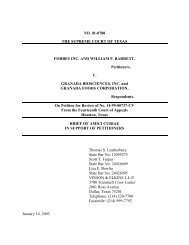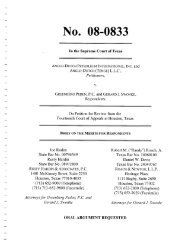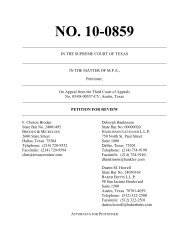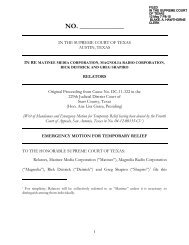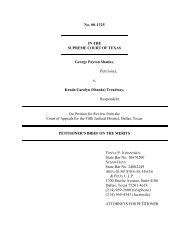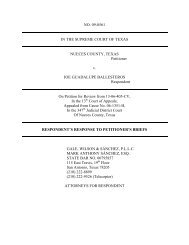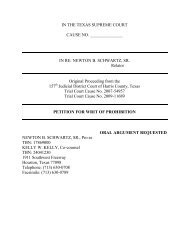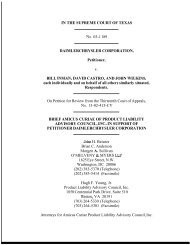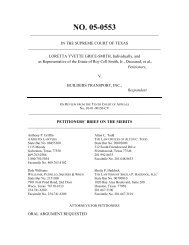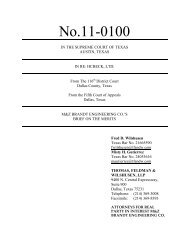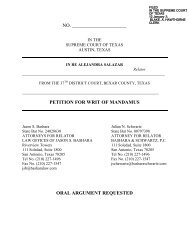Filed - Supreme Court of Texas
Filed - Supreme Court of Texas
Filed - Supreme Court of Texas
You also want an ePaper? Increase the reach of your titles
YUMPU automatically turns print PDFs into web optimized ePapers that Google loves.
It is undisputed that Financial Accounting Standards Board (“FASB”) Statement<br />
<strong>of</strong> Financial Accounting Standards No. 5 (“FASB No. 5”), now codified as 450-20-20 et.<br />
seq., provides the general framework for evaluating liabilities.<br />
Both <strong>of</strong> the<br />
McCulloughs’ CPA witnesses described FASB No. 5 and its principles. FASB No. 5<br />
refers to liabilities as “loss contingencies” and breaks them down into three categories:<br />
<br />
<br />
<br />
probable (“likely to occur”)<br />
reasonably possible (“more than remote but less than likely”)<br />
remote (“chance <strong>of</strong> the future event or events occurring is slight”)<br />
This categorization dictates whether the liability is recognized on the balance sheet,<br />
disclosed in footnotes, or not mentioned in the financial statement, respectively. FASB<br />
No. 5 requires accrual as a charge to income (i.e., counting in the balance sheet) if the<br />
loss contingency is both probable and the amount <strong>of</strong> the loss can be reasonably<br />
estimated.<br />
The McCulloughs begin their abuse <strong>of</strong> discretion argument with the argument<br />
that a trial court abuses its discretion when it ignores “the only evidence <strong>of</strong>fered to<br />
prove a vital fact when such evidence is otherwise credible and free from contradictions<br />
and inconsistency.” 21 The McCulloughs argue that the trial court disregarded the only<br />
evidence on whether accrual <strong>of</strong> the judgment as a liability was required by GAAP, the<br />
testimony <strong>of</strong> their CPA witnesses, Melton and Thomas. However, a more careful<br />
review <strong>of</strong> the record reflects that the trial court followed GAAP and resolved conflicts in<br />
the evidence to conclude that the $365,000.00 contingent money judgment should not<br />
21 See Motion to Review, p. 8.<br />
APPELLEES’ RESPONSE TO MOTION TO REVIEW ORDER ON SUPERSEDEAS BOND – Page 10



